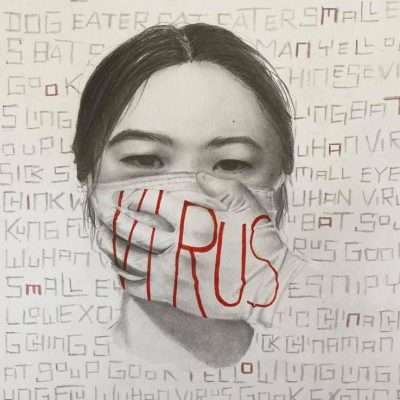Let’s talk about figure drawing. Figure drawing is hard! It’s also hard to get a classroom of students who aren’t confident with their drawing skills to get excited about figure drawing because very few people do it well off the bat. Drawing the human form takes basic drawing skills plus an understanding of the human anatomy mixed with lots and lots of practice. So much practice!
Maybe you don’t teach figure drawing because of all the reasons I raised above. It’s hard, kids complain, and the results aren’t always satisfying. Models are also hard to come by. When I did figure drawing with my advanced students, we either took turns posing (teachers, please be sensitive to students who are self-conscious and/or have body issues- only have willing students pose) or my students would convince a friend who was in study hall to come to pose. It’s definitely not like we had a paid model. Another option is moveable drawing mannequins and skeletons. Yet, observational drawing, including the human figure is often a required portfolio element. I am here to cheer you on and encourage you to tackle figure drawing with your students. Yes, your advanced students but not just them! There are many ways to introduce the figure that students can find success and, maybe, even enjoy it!
Some inspiration for you:
- Line of Action website (Practice tools – Line of Action). This is a great tool for teachers and possibly older students. It is a website that has a lot of tools and resources for figure drawing. Find photos of people to work from, clothed or nude. So, beware that there are nude images on this site.
- Not all figure drawing has to be complex. Think stick figures and flipbooks. Or make GIFs from stick figures.
- Make a marionette! How to Create a Marionette (with Pictures), marionette stringed puppet tutorial, How to make a marionette
- Another way to explore figure drawing is by thinking about being expressive with it, rather than getting frustrated with being realistic. Artist Alberto Giacometti is a great artist to teach. Sinead McDonnell shared examples of her Giacometti-inspired lesson below. You can also visit these sites to find other possible projects.
Easy Alberto Giacometti for Kids Tutorial and Coloring Page, modern figure sculpture in the style of Alberto Giacometti


- Another way to be expressive with figures is to channel artist Henri Matisse’s cutouts.
Inspired by Matisse Cut-Outs – Arte a Scuola

- And let’s not forget Keith Haring. No student will feel tortured when inspired by Haring’s vibrant take on figures.
Tricia Fuglestad’s Blog – Keith Haring Paintings

- Henry Moore is another artist who works with figures. Did you know he did haunting drawings of figures using wax resist? Find examples in this book that I highly recommend, The Drawings of Henry Moore by Andrew Causey (Amazon link). Great approach for older students.

- Fashion design can be very motivating. Learn the basic proportions for humans and compare them to what is used for fashion design.
- One of the things I love about teaching is looking for lessons and stumbling on an artist whose work is amazing. So, in researching ideas for this blog I discovered collage artist Patrick Nelson whose work is often figurative.


- Skeletons are a great resource for figure drawings. If you don’t have a skeleton, check with your science department which may be willing to loan you one. Drawing a figure is hard but drawing a skeleton is very cool. I’m not sure if we ever grow out of thinking that! So, take one from art teacher Nikki Harrington. She dubbed this the “X-ray project” (first and second images below) and had students draw their skeleton four times and use India ink for the background and white gel pen to outline and border. Great project for near Halloween.
Art teacher John Zilewicz does skeleton studies with his students (3rd, 4th and 5th images below) that put emphasis on the “History of Surface.”









